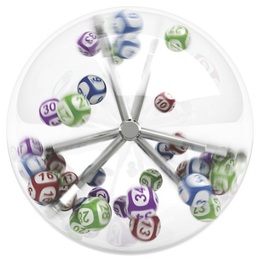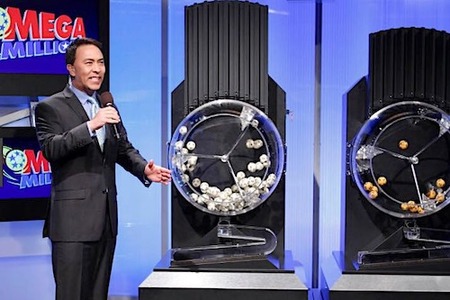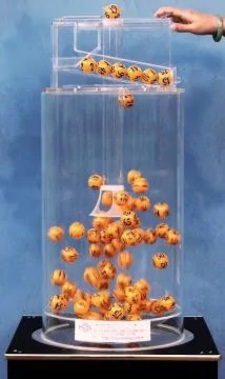How Are Lottery Numbers Drawn?
Since you are visiting our site, then we assume you know how the lottery works: you select numbers from a predefined number pool and then hope that your numbers appear during the draw. If they don’t, you try again for the next draw, but if they do, your life is forever changed, and you will probably spend a good deal of time celebrating—not that anyone could blame you. However, while we all know that this is how the lottery generally works, we never really think about the intricacies of this process. So, in this article, we will answer the question of how lottery numbers are drawn and look at this critical piece of the lottery puzzle more closely.
How Are Lottery Numbers Drawn?

The first reason is that almost all computerised RNGs can only be coded using mathematical formulas that result in pseudo-random generators. If you have not heard this term before, don’t worry—neither had we. What this term means is that the generator will always eventually end up repeating itself—even though this is unlikely to happen in a considerable number of draws. However, this certainty that numbers are likely to appear in the exact same order in the future generally leads lotteries to avoid RNGs. Of course, this can happen—and actually has happened—with ball machines as well, but it’s just much less likely to.
The second reason that lotteries tend not to employ computers to generate winning numbers is because of the security risk associated with something that can be hacked or manipulated. Proof of this being possible is when Eddie Tipton managed to install a program on the computer that housed the Iowa Hot Lotto random number generator. The program helped Eddie predict the winning numbers and fraudulently claim a $16.5 million prize—before he was eventually caught, that is.
With computerised draws not being a viable option, we are left with the old faithful mechanical lottery machines, which most lotteries—including US Powerball, Mega Millions, and UK Lotto—use. Even when using mechanical machines, lotteries are still faced with a choice between two different types of machines: gravity-pick or air-mix.
Gravity-Mix Machines

Once the correct amount of numbers has been drawn out, the operator can shut the door and read the numbers off of the balls sitting in the clear tube. To avoid too many balls rushing out the machine at once, the door at the bottom of the chamber is equipped with an optical sensor and can limit the number of balls that it allows to exit the main mixing chamber.
Air-Mix Machines
As we mentioned, air-mix machines are much more popular than gravity-mix machines, and you are more likely to have seen one of these in action. For these machines, balls that resemble ping pong balls with numbers painted on them are used. These balls are ultra-lightweight and, as with the others, are also weighted to ensure that each number is identical. These balls are thrown into a mixing chamber that then has bursts of air continually pumped into it—effectively causing the balls to tumble around and mix together.
To draw a number, a hatch is opened at the top of the machine that leads into the clear reading tube that holds all drawn numbers. When the hatch opens, the rush of air into the tube acts as a vacuum and effectively pushes/sucks a ball out of the main mixing chamber and into the reading tube. From here, the lottery operators can read out the winning numbers.
Behind the Scenes of Drawing Lottery Numbers

Due to the constant possibility of tampering, most (if not all) lotteries have multiple sets of lottery balls and multiple different lottery machines. Before a draw, operators from the lottery (and usually from an independent third-party), will enter the secure location where these balls and machines are kept. This group will randomly select a device and a set of balls to be used for the upcoming draw. This is done as close to the draw as possible and is not disclosed to anyone who does not need the information.
After the machine and balls have been identified, the relevant material is moved into position for the draw (usually a television studio). Once installed, the device and balls are rigorously tested by further lottery operator officials and third-party auditors. These tests including checking that the machine is operating as it is meant to and that numbers are being drawn at random and no numbers are being drawn frequently in test draws.
Once all this has been completed, the green light is given for the draw to commence. During the draw, the lottery operator and external auditors monitor every action of the machine and together verify that the draw has been held successfully. They will then collectively sign off on the draw, and the machinery and balls will be returned to the secure storage location.
This may seem like a quick process—but you may be surprised. Using the US Powerball as an example, the preparation that takes place before the draw can take up to two hours to complete. Only once all of the processes have been confirmed and the security of the draw has been checked can the draw continue.
Conclusion
If you are like us, then just learning how the different ways that lottery numbers are picked is already interesting, especially with the two different types of machines that are used. However, what really impresses us is the intricacies that go into the preparation of the draw and ensuring that the numbers draw are chosen fairly so that everyone has the same chance of winning—without any tampering occurring at any point in the process.






